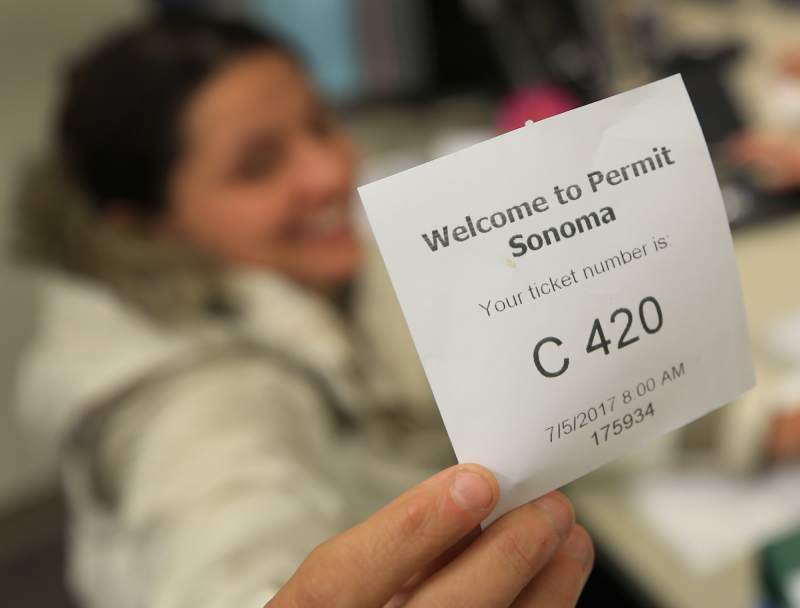If you slept through the past decade, you were amazed by the page-one news last week. In Sonoma County, medical marijuana purveyors lined up to secure new business permits. County government now has its very own “cannabis program manager.”
So much for demon weed and reefer madness.
One consultant estimated that marijuana is now a $3 billion business in Sonoma County, employing 12,000 people — and there is more to come. State and local agencies are only beginning to put together rules governing the legalization of recreational marijuana, a change approved by state voters last November.
In recent months, there’s been a certain breathless enthusiasm for the rush to marijuana — as if there’s sure to be business for everyone. This unbridled excitement may not comply with the basic laws of economics, which suggests that in competitive markets, some will prosper and some won’t, but we shall see.
This moment arrives after decades of public policies that became increasingly untenable. We lived in a society in which many smoked marijuana and only a relative few served long stints in jail for it. We lived in a society in which a secretive enterprise became a persistent cause of violence. And we lived in a society in which people with serious illnesses were obliged to break the law to secure a substance that could help them.
Now we’re coming full circle — or almost full circle. The Trump administration and U.S. Attorney General Jeff Sessions seem determined not to let California go its own way (in more ways than one).
With recreational marijuana now legal, all kinds of people are looking to climb aboard the train. The mom-and-pop growers who advocated for the legalization of their product now must compete with well-heeled investors who see the opportunity to get in on the ground floor of a new and rewarding industry. Be careful what you wish for.
For now, we could fill a room with what we don’t know about the implications of all this. Among the questions awaiting answers:
— How many people will use marijuana, and how much will they consume? Until the new, legal economy grows up, it’s all speculation.
— What rules will govern land use? Every jurisdiction will be required to work through big and small issues — traffic, parking, nuisance smells, the distances between pot dispensaries and schools, the differences between medical and recreational purveyors, water usage and the impacts on streams and rivers, pot farms in rural areas, and so much more.
The city of Santa Rosa last week generated 36 pages of rules governing the medical marijuana industry — and we know this is only the beginning.
Santa Rosa seems determined to demonstrate that it is marijuana-friendly. “Unlike other jurisdictions, I think we have a uniquely permissive ordinance,” Clare Hartman, the city’s deputy director of planning, told Staff Writer Kevin McCallum.
Imagine reading that sentence in your daily newspaper 10 years ago. (Homebuilders could wish.) The city has already approved use permits for 11 dispensaries, and 13 more applications are under consideration.
— How do we enforce laws related to driving under the influence and other illegal behaviors? Over time, we’ve figured out how to enforce laws related to bad behaviors fueled by alcohol. Will marijuana be the same?
— What about the social and human consequences? The truth is, marijuana won’t be healthful for everyone who uses it. When it comes to drugs and alcohol, some outcomes are better than others. For families and workplaces alike, this will be navigating new territory. (In January, a study from the National Academy of Sciences, Engineering and Medicine identified both positive and negative effects from using marijuana. It also found that 22 million Americans over the age of 12 had smoked marijuana in the past 30 days.)
— How will the burgeoning industry conduct its business without the support of banks, which are federally regulated and, therefore, subject to federal laws and regulations that continue to view marijuana as an illegal substance?
For all its uncertainties, this new approach to marijuana makes a lot more sense than what came before. California became a state in which some regions survived on the profits from illegal marijuana farms and some survived on the payrolls from prisons that housed people who sold marijuana.
We have a lot to learn. In uncharted territory, every jurisdiction will be required to come up with its own set of rules.
Staff Writer Kevin McCallum explained: “The highly anticipated draft of the city’s comprehensive medical cannabis ordinance is expected to generate significant feedback from an industry both excited by the opportunities cannabis legalization provides and anxious about the burden excessive taxation and regulation may bring.”
“This is the first date, so to speak, between the cannabis industry and the county,” Supervisor Lynda Hopkins told Staff Writer Paul Payne, “We’ll see where it goes.”
In a world changing in all kinds of ways, here’s one more.
Link – Press Democrat





































